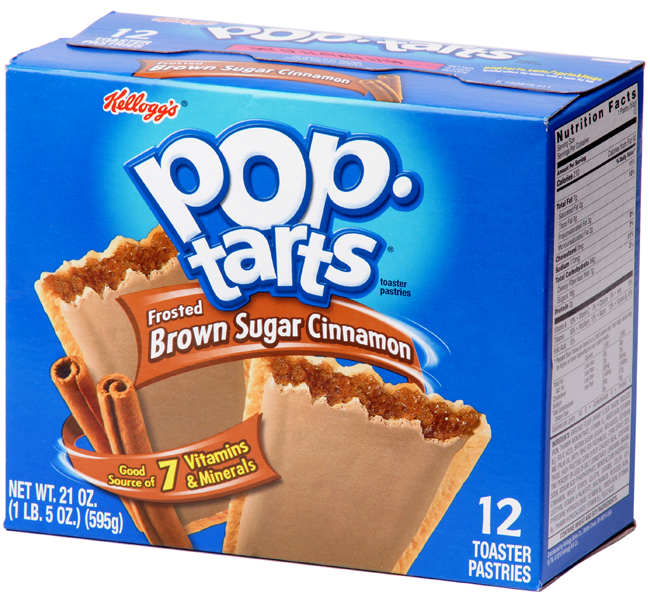
Part of the overwhelming allure of processed foods beyond the colorful, creative packaging shouting at you from the shelf is the orderly, symmetrical and very consistent shapes of each cracker, chip, cookie, puff and flake.
The freakish uniformity of each Oreo cookie to all others that ever existed lulls the consumer into a complacent and dazed shopping routine that requires neither thought nor examination to execute.
Contrast the mindless grab and go mentality of supermarket shopping with the thoughtful and slow progression of a consumer through a farmer’s market as vegetables, fruits, and artisanal foods are picked up, touched and examined closely to determine which are ripest, most nutritious, and of highest quality.
When processed foods like pop tarts are examined under a scanning electron microscope (SEM), however, this uniformity fades away and a very different picture emerges.
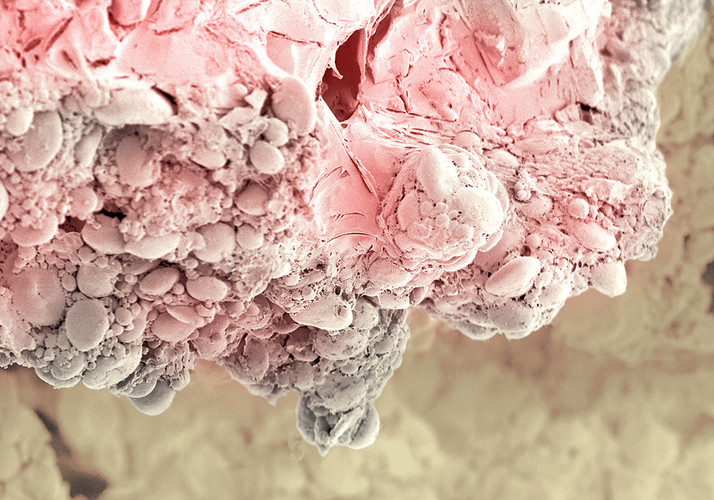 Misshapen chaos and a horrifying lack of uniform chemical structure is revealed at 30,000 times the actual size.
Misshapen chaos and a horrifying lack of uniform chemical structure is revealed at 30,000 times the actual size.
In fact, artist/photographer Caren Alpert declares that pop tarts at electron microscope magnification strikingly resembles a pink calcium deposit.
Yuck!
Contrast the scary disharmony of a pop tart’s magnified chemical structure with the precision and conformity of a pineapple leaf. Do all pineapple leaves look the same? Definitely not. But under an electron microscope, the true beauty and order is revealed.
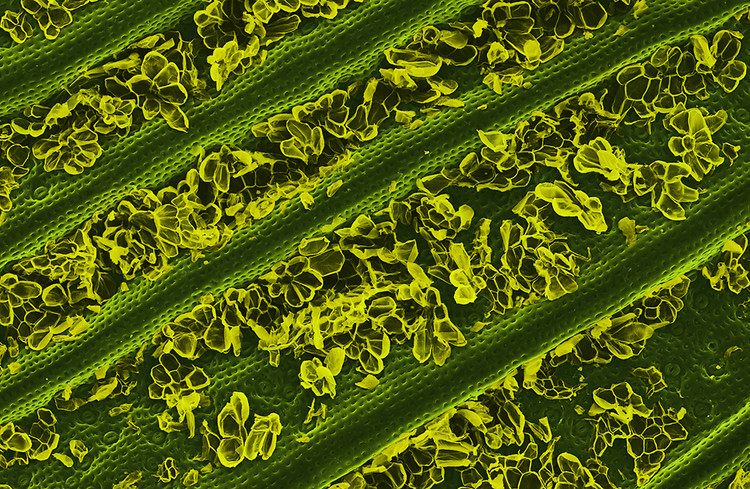
How about a fortune cookie? Does this look like something our digestive system would welcome and know exactly what to do with?
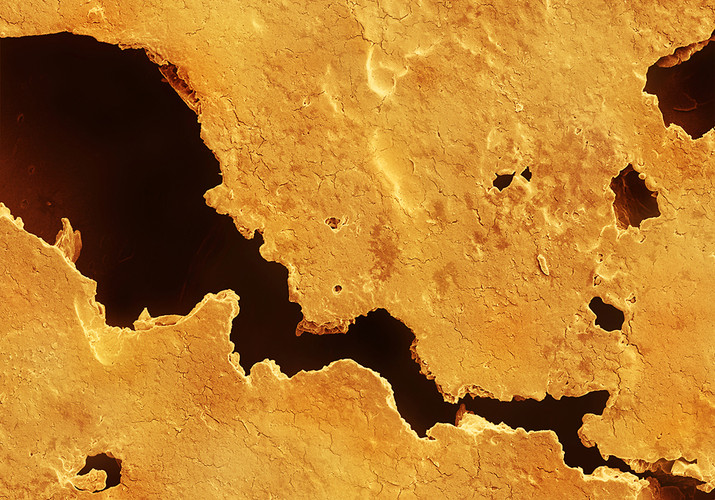
Compare this chemical chaos with that of a simple almond below. Doesn’t it seem that the orderly perfection of our digestive enzymes would work a lot more effectively with this precise molecular structure?
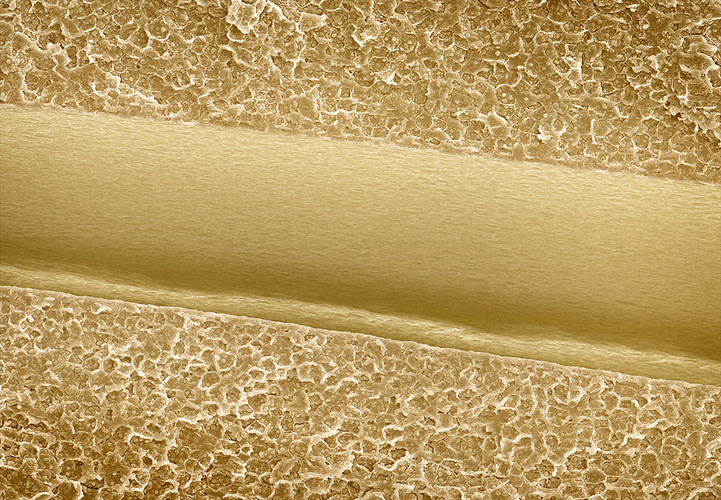
The next time you are tempted to pick up that colorful package from the store shelf, remember that the comforting uniformity you see with your naked eye is a complete illusion. The true molecular nature of that enticing processed food is one of chaos and disharmony that will correspondingly bring decay and decline to the person that eats it.
It is ironically the visual irregularity of whole foods that is the clue to their true nature of orderly symmetry under intense magnification.
If these pictures astound you as they did me, you can view the entire collection of Ms. Alpert’s amazing photo series online here, or at New York’s Citigroup Building (153 E. 53rd St.) through January 31, 2013.
Sarah, The Healthy Home Economist







everything looks nasty under one of those scopes, lets just stick to facts and not scare tactics.
From the few that I saw, it seems like she was comparing apples and oranges. Yes, processed foods are bad, but I’d love to see them compared to their healthy food, properly prepared counterparts.
A scanning electron microscope uses a beam of electrons to show magnification up to 30,000X actual size. It was Ms. Alpert’s artistic discretion to figure out how deep to go to achieve the artistic view of the specific food she was photographing in any given situation.
I’m wondering what the magnified photos of GMO foods would like verses the natural ones? Would be interesting to see if they vary or if they are all the same because of the alterations. I would guess that the symmetry may be off too. Would love to see some comparisons!
Captions from the artist’s gallery show the foods at varying magnifications, but none of them at 30,000x’s or anywhere near it.
Great article! I have never bought pop tarts and have never eaten them. They look terrible anyway, I could never see the attraction!
Doesn’t the pineapple leaf look wonderful under the microscope!
Unfortunately you are comparing pictures of food that had to be prepared verses food that is a single ingredient. What would a picture look like of unprocessed food, with multiple ingredients look like? Probably the same as the processed food. Pineapples and almonds are single ingredients, hence the perfect uniformity. Mix those two into some sort of pineapple/almond paste, and it wouldn’t look so uniform under a microscope.
My son who is 6 asked what the poptart photo was. After telling him he just said,”Eww”.